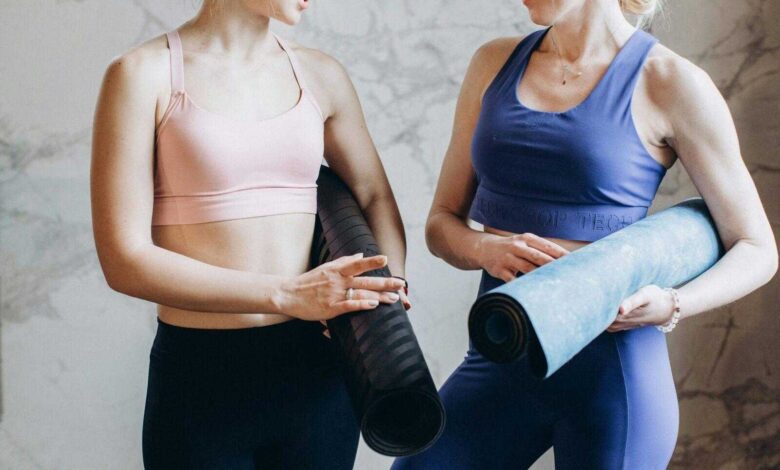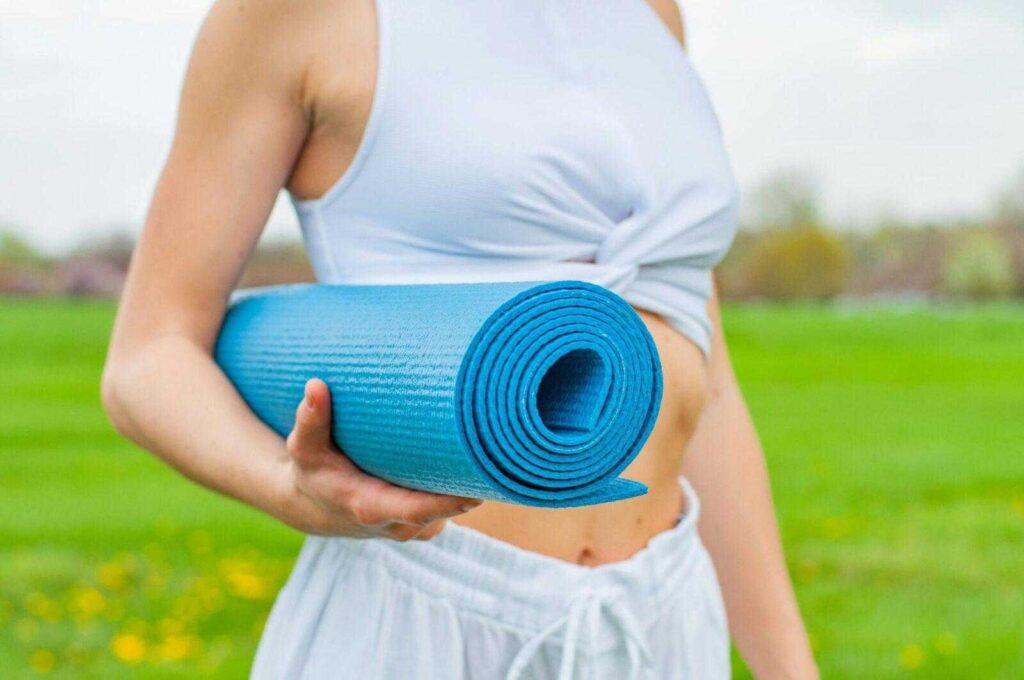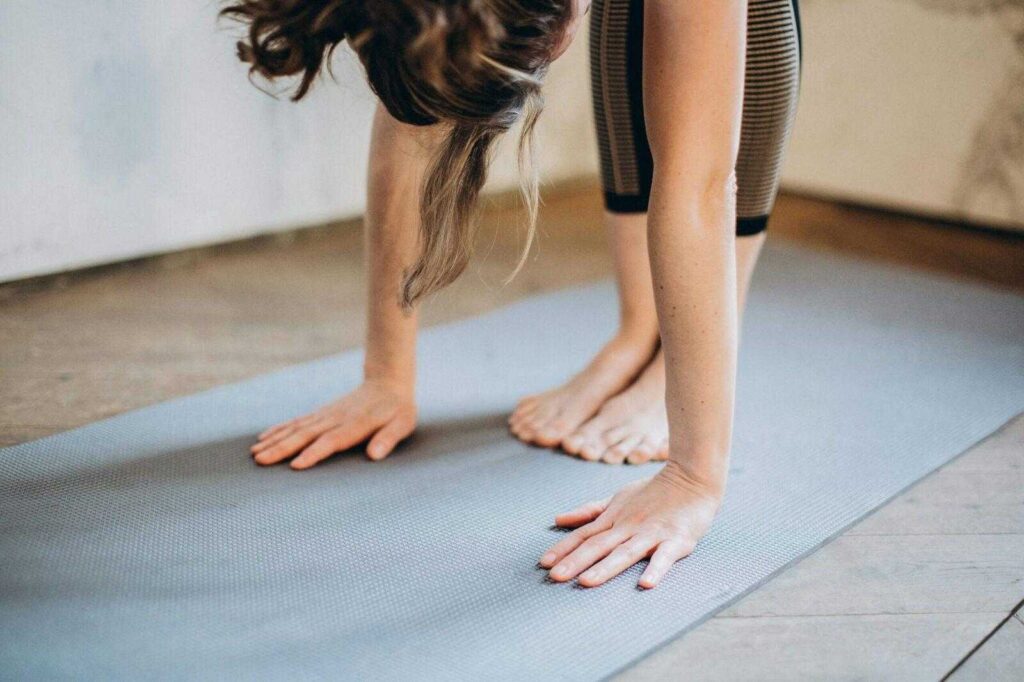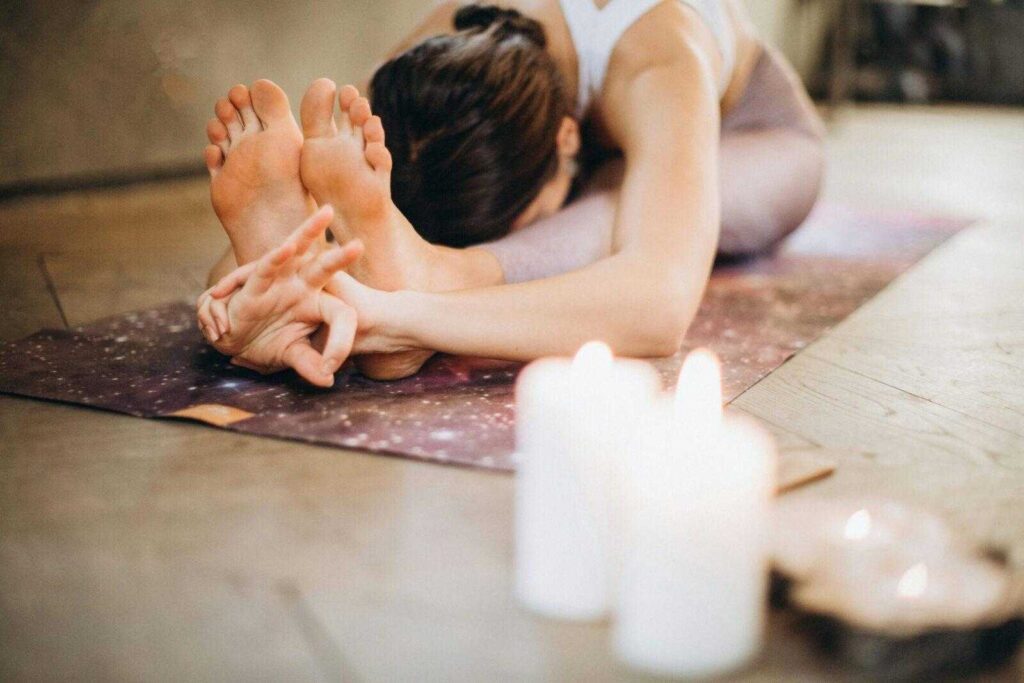Green Yoga: Eco-Conscious Practices and Sustainable Yoga Gear

Imagine stepping onto your yoga mat, feeling the texture beneath your feet, and knowing that your practice supports not only your well-being but also the health of the planet. Meet Sarah, an avid yogi who transformed her practice into a green journey. Sarah’s dedication to eco-conscious yoga started when she learned about the environmental impact of traditional yoga gear and practices. Intrigued by the idea of aligning her spiritual practice with her environmental values, Sarah began exploring sustainable options and gradually transitioned to a fully eco-friendly yoga routine.
In our fast-paced world, stress, anxiety, and environmental degradation are increasingly common. While yoga offers a sanctuary from mental strain, many conventional yoga products and practices contribute to environmental harm. From non-biodegradable mats to energy-intensive studios, the carbon footprint of a typical yoga practice can be significant. Traditional yoga mats often contain PVC, a type of plastic that is not only difficult to recycle but also releases harmful toxins during production and disposal. Additionally, many yoga clothes are made from synthetic fabrics that shed microplastics into our waterways.
Green yoga emerges as a holistic approach that aligns physical and mental well-being with ecological responsibility. By integrating eco-friendly practices and sustainable yoga gear, you can reduce your environmental footprint and enhance your connection to nature. Green yoga involves choosing sustainable products, supporting ethical brands, and adopting practices that minimize waste and energy consumption. This approach not only benefits the planet but also enhances the mindfulness and intentionality of your yoga practice.
Scientific studies highlight the myriad benefits of yoga for mental and physical health, including stress relief, improved flexibility, and enhanced mindfulness. When practiced with eco-consciousness, yoga also supports environmental sustainability, offering a dual benefit of personal and planetary health. Research has shown that spending time in nature can reduce stress and improve mental well-being, and combining this with yoga amplifies these benefits. Practicing yoga outdoors, using eco-friendly gear, and incorporating mindfulness techniques that foster a deeper connection to the environment can lead to a more fulfilling and sustainable yoga experience.
This article is for anyone seeking to enrich their yoga practice with sustainability. Whether you’re a seasoned yogi, a beginner, a yoga teacher, or a studio owner, you’ll find practical tips and insights to make your practice greener. Busy professionals looking to reduce stress, parents seeking eco-friendly practices for their families, and general wellness enthusiasts will all benefit from integrating green yoga into their routines.
Outline of the Blog
In this comprehensive guide, we will explore:
- Understanding Eco Yoga
- Sustainable Yoga Gear
- Green Yoga Studio Practices
- Eco-Conscious Yoga Clothing
- Mindful Yoga Practices
- Benefits of Green Yoga Retreats
- Eco-Friendly Yoga Brands and Resources

Understanding Eco Yoga
What is Eco Yoga?
Eco yoga integrates the principles of environmental sustainability into the practice of yoga. It involves using eco-friendly yoga products, adopting sustainable studio practices, and fostering an awareness of the environmental impact of our actions. Eco yoga encourages practitioners to consider the entire lifecycle of their yoga products, from production to disposal, and to choose options that minimize environmental harm. It also promotes mindfulness in every aspect of the practice, from setting intentions to being present in the moment.
Yoga and the Environment
The relationship between yoga and the environment is profound. Traditional yoga emphasizes harmony and balance, principles that extend naturally to ecological sustainability. By practicing yoga with an environmental focus, we honor these principles in a modern context. This means not only reducing our physical footprint but also cultivating a mindset of respect and gratitude for the natural world. The ancient yogic concept of “Ahimsa” (non-harming) aligns perfectly with environmental sustainability, encouraging us to live in a way that minimizes harm to other beings and the planet.
Reducing Your Yoga Footprint
Reducing your yoga footprint involves making conscious choices about the products and practices you use. Opting for sustainable materials, supporting ethical brands, and minimizing waste are key steps toward a greener practice. Consider the following strategies:
- Choose Eco-Friendly Gear: Invest in mats, blocks, and other props made from sustainable materials such as cork, natural rubber, and bamboo.
- Support Ethical Brands: Buy from companies committed to fair labor practices and environmental stewardship.
- Minimize Waste: Use reusable water bottles, avoid single-use plastics, and recycle or compost whenever possible.
- Practice Outdoors: Whenever weather permits, practice yoga outside to reduce the need for artificial lighting and climate control.
- Educate Yourself and Others: Stay informed about sustainable practices and share your knowledge with fellow yogis.
Sustainable Yoga Gear
Eco-Friendly Yoga Mats
Choosing an eco-friendly yoga mat is a significant step toward a sustainable practice. Look for mats made from natural or recycled materials such as cork, rubber, or TPE (Thermoplastic Elastomer). Unlike PVC mats, these materials are biodegradable and free from harmful chemicals. Eco-friendly mats not only benefit the environment but also provide a safer surface for your practice, free from toxic off-gassing.
Benefits of Cork Yoga Mats
Cork yoga mats are durable, naturally antimicrobial, and provide excellent grip. Cork is a renewable resource, harvested from the bark of cork oak trees without harming the trees themselves. This sustainable harvesting process makes cork an excellent material for eco-friendly yoga mats. Additionally, cork mats are naturally resistant to mold and mildew, reducing the need for chemical cleaners.
Example Brands and Resources:
- Manduka: Offers a range of eco-friendly yoga mats made from natural rubber and other sustainable materials.
- Liforme: Known for their sustainable yoga mats with alignment guides to help improve your practice.
Recycled and Upcycled Yoga Props
Upcycled yoga props, such as blocks, straps, and bolsters, can be made from recycled materials. These props reduce waste and conserve resources by giving new life to materials that would otherwise end up in landfills. For example, yoga blocks can be made from recycled foam or cork, and straps can be crafted from reclaimed fabric.
Example Products:
- Manduka Recycled Foam Yoga Block: Made from over 50% recycled EVA foam.
- Liforme Recycled Yoga Strap: Made from durable, eco-friendly materials.
Natural Yoga Mat Cleaners
Maintaining your yoga mat with natural cleaners helps reduce chemical exposure and environmental impact. DIY cleaners using ingredients like vinegar, tea tree oil, and lavender are effective and eco-friendly. These natural cleaners are easy to make and use, providing a safe and effective way to keep your mat clean without harming the environment.
Example Recipe for Natural Yoga Mat Cleaner:
- 1 cup of water
- 1/4 cup of white vinegar
- 5 drops of tea tree oil
- 5 drops of lavender essential oil
Mix ingredients in a spray bottle and use as needed.
Ethical Yoga Wear
Investing in ethical yoga wear supports fair labor practices and reduces environmental harm. Ethical brands prioritize sustainability, using organic and recycled materials, and ensuring fair wages and safe working conditions for their workers. By choosing ethical yoga wear, you support a more equitable and sustainable fashion industry.
Resources for Ethical Yoga Wear:
- Patagonia: Offers eco-friendly, Fair Trade Certified yoga apparel.
- PrAna: Known for their commitment to sustainability and ethical manufacturing practices.
- Girlfriend Collective: Uses recycled materials to create stylish, sustainable activewear.
Green Yoga Mat Materials
Materials such as jute, cotton, and natural rubber are biodegradable and offer a sustainable alternative to synthetic mats. Jute mats are durable and provide good grip, while cotton mats offer softness and comfort. Natural rubber mats are known for their excellent cushioning and durability.
Bamboo Yoga Blocks vs. Wood
Bamboo blocks are lightweight, durable, and made from a renewable resource. They offer a sustainable alternative to traditional wooden blocks. Bamboo grows quickly and requires fewer resources than wood, making it an eco-friendly choice. Additionally, bamboo blocks are strong and provide excellent support during yoga practice.

Green Yoga Studio Practices
Sustainable Studio Design
Incorporate sustainable design principles by using energy-efficient lighting, natural ventilation, and eco-friendly building materials. Studios like Yoga Tree in San Francisco lead by example with their green designs. Sustainable studio design not only reduces environmental impact but also creates a healthier and more inspiring space for practice.
Resources:
- Yoga Tree: Known for their commitment to sustainability and green building practices.
Eco-Friendly Cleaning Products
Use natural, biodegradable cleaning products to maintain hygiene without harming the environment. Brands like Seventh Generation and Method offer effective, eco-friendly cleaning solutions. These products are free from harsh chemicals and toxins, making them safe for both people and the planet.
Example Products:
Energy Conservation
Implement energy-saving practices such as using LED lighting, reducing water consumption, and optimizing heating and cooling systems. Encourage practices like “energy-saver” classes during daylight hours. By conserving energy, studios can reduce their carbon footprint and operating costs.
Waste Reduction
Promote waste reduction by providing recycling bins, encouraging digital class schedules, and using reusable towels and props. Studios can also host events to educate members on sustainability. Reducing waste not only helps the environment but also creates a cleaner and more organized studio space.
Resources for Sustainable Studio Practices:
- Green Building Council: Offers resources and certifications for sustainable building practices.
- Energy Star: Provides guidelines and products for energy-efficient practices.
Eco-Conscious Yoga Clothing
Organic Yoga Clothing
Organic cotton, bamboo, and hemp are popular materials for eco-friendly yoga wear. These fabrics are grown without harmful pesticides and require less water than conventional cotton. Organic clothing is not only better for the environment but also softer and more comfortable for the wearer.
Example Brands:
Vegan Yoga Clothing Brands
Brands like Beyond Yoga and Boody create stylish, functional yoga wear without animal products. These brands prioritize sustainability and ethics, offering high-quality, cruelty-free options. Vegan yoga clothing is an excellent choice for those who want to align their practice with their values.
Example Brands:
- Beyond Yoga: Offers a variety of vegan and sustainable yoga apparel.
- Boody: Known for their bamboo-based, vegan activewear.
Second-Hand Yoga Clothing Stores
Thrift stores and online platforms like Poshmark and ThredUp offer second-hand yoga clothing. Buying second-hand reduces waste and promotes a circular economy. It also allows you to find unique and affordable pieces while supporting sustainability.
Resources for Second-Hand Yoga Clothing:
- Poshmark: A popular online marketplace for buying and selling second-hand clothing.
- ThredUp: An online thrift store offering a wide range of second-hand apparel.
Ethical Yoga Wear
Invest in brands that prioritize fair trade, worker rights, and sustainable production practices. Ethical yoga wear ensures that the people who make your clothes are treated fairly and work in safe conditions. By supporting ethical brands, you contribute to a more just and sustainable fashion industry.

Mindful Yoga Practices
Integrating Sustainability into Your Practice
Mindfulness and sustainability go hand in hand. By incorporating eco-conscious practices into your yoga routine, you enhance your awareness and reduce your environmental impact. Simple actions like bringing a reusable water bottle to class, using eco-friendly mats and props, and supporting sustainable brands can make a significant difference.
Meditation for Environmental Connection
Meditation can deepen your connection to nature and inspire eco-conscious living. Practices like nature visualization and gratitude meditations foster a sense of appreciation for the natural world. By regularly reflecting on your relationship with the environment, you cultivate a deeper understanding and commitment to sustainability.
Resources for Meditation:
- Headspace: Offers guided meditations that include nature themes.
- Calm: Provides a variety of meditations focused on relaxation and mindfulness.
Yoga and Environmental Awareness
Yoga teaches us to live with intention and mindfulness. By extending these principles to our interactions with the environment, we can reduce our ecological footprint. This includes being mindful of our consumption, reducing waste, and supporting sustainable practices in all aspects of life.
Benefits of Green Yoga Retreats
Immersive Experience
Green yoga retreats offer a unique opportunity to immerse yourself in sustainable living while deepening your yoga practice. These retreats are often held in eco-friendly locations, providing a serene and natural environment for practice. Participants can enjoy organic meals, eco-friendly accommodations, and activities that promote environmental stewardship.
Example Retreats:
- BookYogaRetreats: Allows you to filter retreats based on their eco-conscious practices.
- Pure Yoga: Offers retreats that emphasize sustainability and environmental mindfulness.
Enhanced Well-Being
Practicing yoga in a natural setting can enhance your physical, mental, and emotional well-being. The combination of yoga and nature promotes relaxation, reduces stress, and fosters a deeper connection to the environment. Participants often leave green yoga retreats feeling rejuvenated and inspired to integrate sustainable practices into their daily lives.
Sustainable Practices
Green yoga retreats emphasize sustainability in all aspects, from food to accommodations. This holistic approach ensures that your retreat experience aligns with your values and supports the health of the planet. Retreats may include workshops on sustainability, organic farming, and eco-conscious living, providing valuable knowledge and inspiration.

Eco-Friendly Yoga Brands and Resources
Leading Brands
Several brands are leading the way in eco-friendly yoga gear and clothing. Companies like Manduka, PrAna, and Liforme are known for their commitment to sustainability and ethical practices. These brands offer a wide range of eco-friendly products, from mats to clothing, ensuring that you can practice yoga with a clear conscience.
Example Brands:
- Manduka: Offers eco-friendly yoga mats, props, and accessories.
- PrAna: Known for their sustainable and ethical yoga clothing.
- Liforme: Provides high-quality, eco-friendly yoga mats with alignment guides.
Resources for Sustainable Living
Numerous resources are available to help you integrate sustainability into your yoga practice and daily life. Websites like the Green Building Council and Energy Star offer guidelines and certifications for sustainable practices. Additionally, meditation apps like Headspace and Calm provide guided meditations that foster environmental awareness.
Resources:
- Green Building Council: Offers resources and certifications for sustainable building practices.
- Energy Star: Provides guidelines and products for energy-efficient practices.
- Headspace: Offers guided meditations that include nature themes.
- Calm: Provides a variety of meditations focused on relaxation and mindfulness.
Green yoga is more than just a trend; it’s a commitment to aligning your practice with your values. By choosing eco-friendly gear, supporting ethical brands, and integrating sustainability into your routine, you contribute to the health of the planet while enhancing your own well-being. The power of green yoga lies in its holistic approach, fostering a deep connection between mind, body, and environment.
Embrace green yoga as a path to greater mindfulness, well-being, and sustainability. Start by making small changes, such as switching to an eco-friendly mat or supporting ethical clothing brands. As you deepen your practice, explore ways to integrate sustainability into all aspects of your life. Together, we can create a more harmonious and sustainable world, one yoga practice at a time.

Frequently Asked Questions
What is eco yoga?
Answer: Eco yoga integrates environmental sustainability into yoga practice, using eco-friendly products and mindful practices that reduce environmental impact.
How can I find sustainable yoga gear?
Answer: Look for products made from natural, recycled, or renewable materials. Brands like Manduka and Liforme offer eco-friendly mats and props.
What are the benefits of cork yoga mats?
Answer: Cork yoga mats are durable, naturally antimicrobial, and provide excellent grip. Cork is a renewable resource, making it a sustainable choice for your practice.
How can I make my yoga studio more sustainable?
Answer: Implement energy-saving measures, use eco-friendly cleaning products, and promote waste reduction. Encourage members to bring reusable water bottles and provide recycling bins.
What are the best materials for eco-conscious yoga clothing?
Answer: Look for clothing made from organic cotton, hemp, bamboo, and recycled materials. These fabrics are sustainable, breathable, and comfortable.
Can meditation help improve my connection to the environment?
Answer: Yes, meditation can deepen your appreciation for nature and inspire eco-conscious living. Practices like nature visualization and gratitude meditations enhance your connection to the environment.
Where can I find sustainable yoga teacher training programs?
Answer: Research yoga schools that emphasize sustainability and environmental stewardship. Programs like those offered by Green Lotus Yoga & Healing Center and Pure Yoga integrate eco-conscious practices into their training.
What are some eco-friendly alternatives to traditional yoga props?
Answer: Consider props made from sustainable materials like bamboo blocks, organic cotton straps, and recycled bolsters. Brands like Manduka and Hugger Mugger offer eco-friendly yoga props.
How can I participate in green yoga retreats?
Answer: Look for retreats that prioritize sustainability, offer eco-friendly accommodations, and source organic, local food. Websites like BookYogaRetreats allow you to filter retreats based on their eco-conscious practices.
Are there any eco-friendly alternatives to traditional yoga wear?
Answer: Yes, look for yoga clothing made from organic cotton, hemp, bamboo, and recycled materials. Brands like Patagonia and Girlfriend Collective offer eco-friendly and stylish options.




